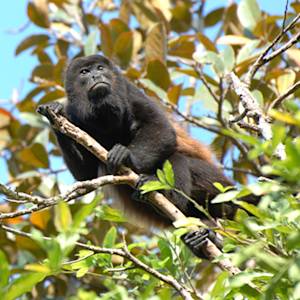Barbary macaques
2021 CE • Morocco and Algeria
"Macaca monkeys were once densely spread throughout North Africa, from Egypt and Libya to Morocco. However, due to a severe decrease in their numbers, almost to extinction, they can only be found today in some areas of Morocco and Algeria. Subsequently, their main refuge became the Atlas Mountain Forests, where there are an estimated 5,000 macaques, down from three times this number in the late 1970s." The macaques play an important role in the Atlas Mountain Forest ecosystem, dispersing the seeds of cedars and oaks, and keep harmful insect populations under control. "Since the late 1990s, illegal trade in the Barbary macaque significantly increased" and were considered the "most commonly confiscated mammal from 2006 to 2010 . . . Another major threat to the Barbary macaques’ survival is the drastic habitat degradation resulting from the illegal and unregulated cutting of trees . . . The macaque population's survival is not only threatened by illegal hunting and logging. Excessive overgrazing, erosion, droughts, forest fires, and environmental pollution in the last decades are all factors that contributed to endangering the Barbary macaque to the brink of extinction."
Khalid Bencherif, "Barbary macaques: Moroccan ecological heritage threatened with extinction," Earth Journalism Network, May 14, 2021.
Image: Angelica Kaufmann, CC BY 4.0, via Wikimedia Commons


Learn about Maya Lin’s fifth and final memorial: a multi-platform science based artwork that presents an ecological history of our world - past, present, and future.

Discover ecological histories and stories of former abundance, loss, and recovery on the map of memory.

Learn how we can reduce our emissions and protect and restore species and habitats – around the world.

See how art can help us rethink the problems we face, and give us hope that each one of us can make a difference.

Help make a global memorial something personal and close to home. Share your stories of the natural world.


